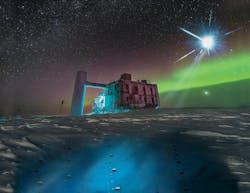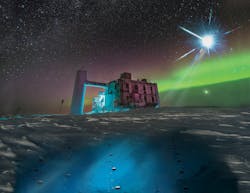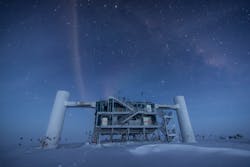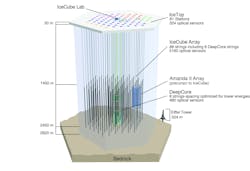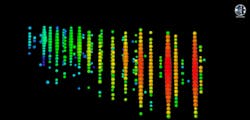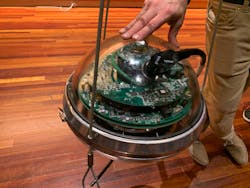On Jan. 15, my wife and I attended “National Geographic Live: View From Above”, which featured former NASA Astronaut and Air Force Colonel Terry Virts sharing his experiences as pilot of Space Shuttle Endeavor and what life was like aboard the International Space Station. It was a late Christmas gift from my wife, who knows I’m a space geek. Astronomy/astrophysics involved too much math for me to want to pursue academically, but I’ve remained a layperson fan of anything space-related nonetheless, and I relish the opportunity to learn from those who work in the field. It was a great night. Virts’ stories and perspectives he shared were fascinating. But surprisingly, there was something else at the venue that I found equally interesting before we even took our seats in the auditorium.
The exhibit taught us that construction finished on IceCube in December of 2010, nearly 25 years after the idea of detecting neutrinos in ice was first proposed. The IceCube detector is made up of more than 5,000 sensors on 86 cables that run 2,450 meters below the ice surface down to the bedrock. Affixed to the cables between depths of 1,450 and 2,450 meters, the sensors collect light given off by particles and then digitize and time stamp the information. A more densely-instrumented region near the center of IceCube—DeepCore—enables the detection of lower-energy neutrinos, enhancing the detector for dark-matter searches and neutrino-oscillation studies. The surface component of IceCube—IceTop—detects cosmic-ray showers.
Constructed 800 meters away from the Amundsen-Scott South Pole Station and covering one cubic kilometer, IceCube was the first detector of its kind, designed to observe neutrinos from the most violent astrophysical sources in our universe. The station detects more than one hundred thousand neutrinos per year, but so far only slightly more than one hundred are in the energy range to be of interest to astronomy. While finding those qualifying neutrinos is a challenge, IceCube has already revealed the highest-energy neutrinos ever observed. These will allow the team there and the overall astronomy field to explore the origin and nature of cosmic rays.
Learn much more about IceCube at their website, and in this 6-minute informative video:
About the Author

